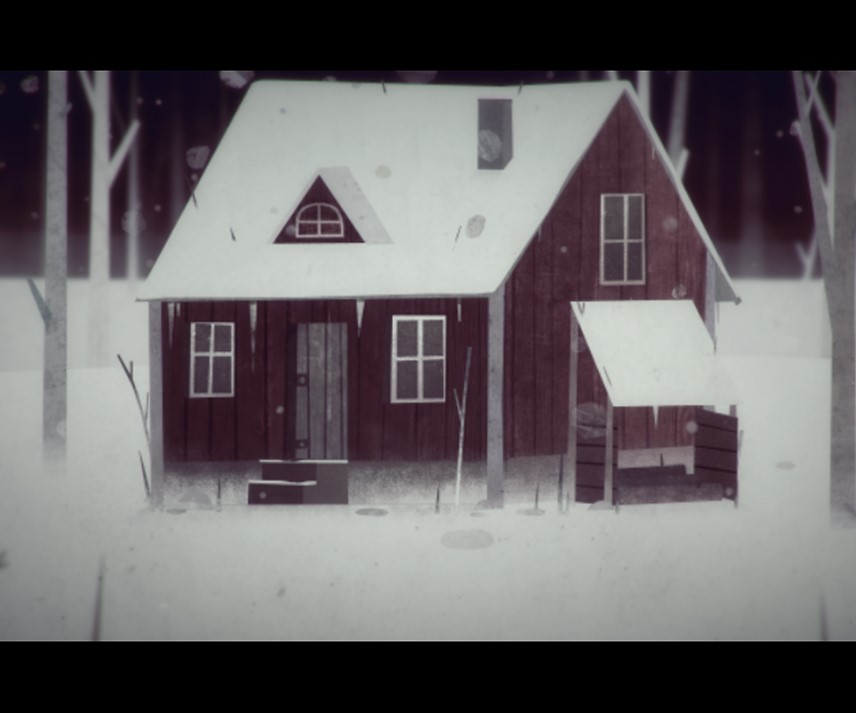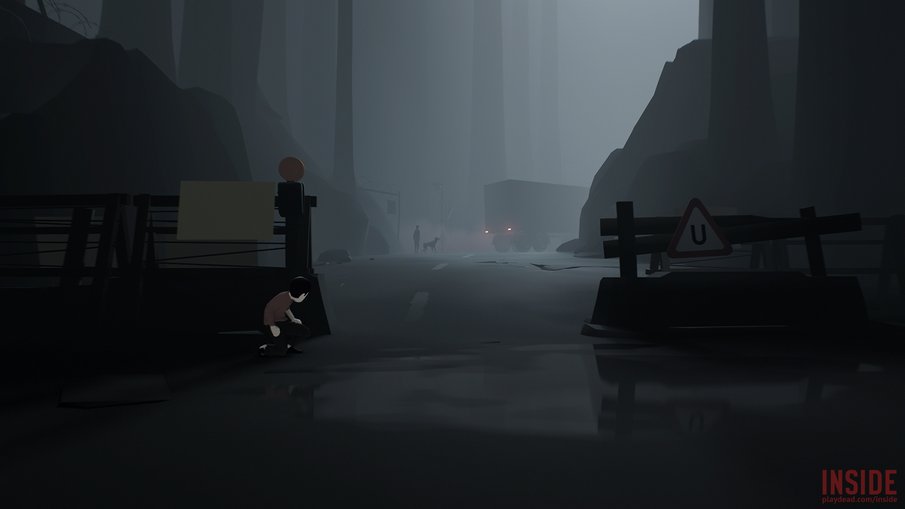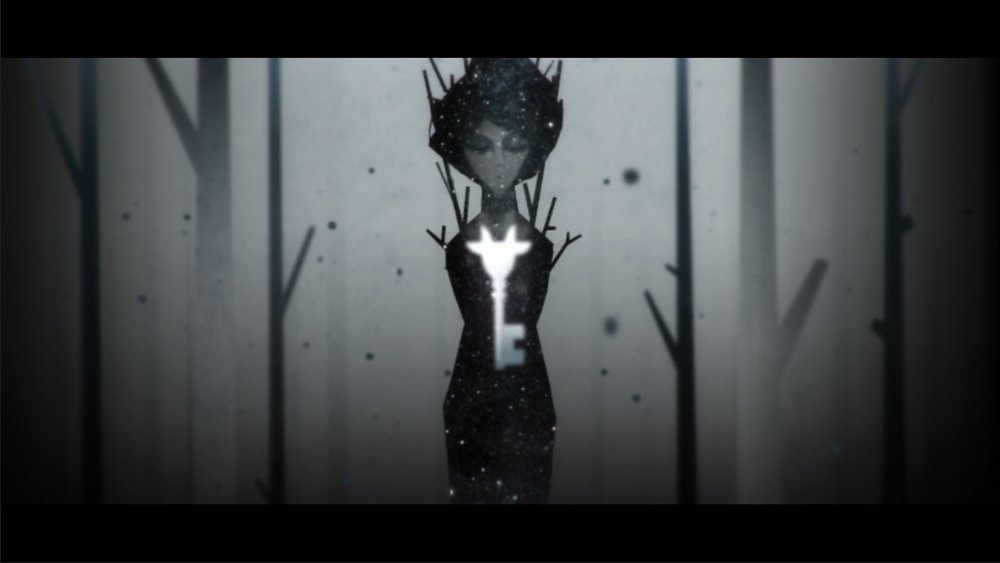Video games as societal critics of the Nordics: Case studies in Game Nóir
Just like Nordic Nóir, video games are not only a form of entertainment, they also provide alternative perspectives on their respective countries, region and societies. These perspectives tend to differ from the projected positive images of the Nordic region, as they often focus on flaws and struggles. Video games, with their wide influence, can deconstruct the myth of Nordic exceptionalism through pop culture, taking up and continuing to explore in new ways what was started by Nordic Nóir in the 1990s.

Definitions of darkness in Nordic Nóir
The idea of “darkness” is often used in both Nordic Nóir and video games to talk about the Nordic countries; it is as if the two are inseparable. Darkness itself is a complicated concept to define, even in a specific context, because it applies to many different things: evil and beauty in literature; mental illness; crime or horror in pop culture; the opposite of enlightenment in history; the night and day cycle in natural sciences; the “dark web” in technology etc. Darkness in the context of the Nordic region, too, can relate to different things, but it is often associated with negative images of culture, society and geography, whether the darkness is literal (long winters, lack of light), or suggested (societal concerns, cultural issues). Importantly, it is often used to help to shed light on key societal questions, sometimes ironically. Just as Eminem’s “Darkness”, pop culture in and out of the Nordics point to problems that often go overlooked in a political context.
Nordic Nóir as a genre is associated with an often gloomy, bleak, dark and grim mood – all well-fitting to the literary description of darkness. It is usually written from a police point of view, and deals with societal issues such as racism, gender inequality or pedophilia.
Examples include both visual and narrative ‘darkness’. Weather is frequently a catalyst for darkness in the Nordics, including Arnaldur Indriðason’s depictions of Iceland, the first 50 pages of Jar City are a case in point where the characters repeatedly mention rain, storms and lightning. Henning Mankell’s Wallander often complains about the weather in Ystad as well. In Faceless Killers, for example, it is a recurring theme every 2-3 pages, or every time Wallander goes to a new location. The whole plot of the Icelandic TV series Trapped (“Ófærð”) revolves around the fact that a snowstorm blocks all ways of travelling to the remote Icelandic town. As the weather locks everyone inside the small town, social issues that could normally be ignored or pushed back have no choice but to arise and create tensions.

PICTURE: A clear example of visual darkness from the game YearWalk. Source of picture: game producers SIMOGO
Darkness is also used within the characters; oftentimes, Nordic Nóir protagonists are themselves representations of some societal issues. Indriðason’s Erlendur is short-tempered and estranged from his two children, while his daughter is struggling with her drug addiction. Jø Nesbø’s Harry Hole is an alcoholic, Mankell’s Wallander suffers from solitude and has a hard time connecting with his family after his divorce. Female protagonists are not exempt, with for example Mons Kallentoft’s Malin Fors, who struggles with alcoholism and her role as a mother.
Through these characters and their stories, Nordic Nóir writers and producers frame the Nordic countries through parts of their past and present that may not have been dealt with, or are difficult to work through. Adler-Olsen tackles the difficult topic of eugenics in Denmark, Indridason’s Erlendur expresses his dislike of American occupation in Iceland, Mankell deals with immigration and national identity, while Icelandic TV series Trapped shows us the negative impacts of small-town mentality and that you can never truly know your neighbors.
Similarly, some of these key aspects of Nordic Nóir can also be found in certain video games emanating from the Nordic countries in what I have termed “Game Nóir”.

The main character in 'Inside' sneaking over a dark forest road. Source of picture: game producers PLAYDEAD.
Visual darkness in video games
In video games, where it is possible to construct a ‘world’ less like reality than within Nordic Nóir, it is possible for darkness and dark images to take on an even greater visual form; landscape and atmosphere tend to be prevalent. Some examples include:
In Hellblade: Senua’s Sacrifice, Pict warrior Senua makes her way to Norse hell to save the soul of her lover, Dillion. As combat is limited in the game, landscapes and ambiance is key to guide the player through Senua’s journey. Senua progresses through different worlds of darkness: some are more obvious, like an underground cave with an enemy that can hide and disappear while she struggles to see, to less obvious areas such as the forest or the coast, where darkness is suggested and experienced rather than palpable.
(Ninja Theory, QLOC, Hellblade: Senua’s Sacrifice, UK, 2017). |
|
In Through the Woods, the game begins during a light summer day at the cabin in the woods. Quickly however, darkness is creeping in: the following day, the main character’s son is kidnapped and she follows him through a thick fog on the lake to a much gloomier world. From then on, most of the game happens at night, and the protagonist needs a flashlight to get around, and to scare off some of the monsters in the game. (Antagonist AS, Antagonist, Through the Woods, 1C Entertainment, Norway, 2016). |
|
Year Walk also happens in the dark. Even though the wintery landscape covered in snow should reflect some light, the ambiance is indeed very bleak. The landscapes are mostly black and white, and the few colors that are present are quite dim (browns and grays mostly). (Simogo, Year Walk, Simogo, 2013). |
|
Independent Danish studio Playdead took darkness quite literally and went a step further, by creating two games -Limbo and Inside - that are almost entirely black and white, and where the character cannot see far ahead. Both games bridge the gap between simply utilizing darkness as a visual and additionally applying it to the story. (Playdead, Double Eleven, Limbo, 2010; Playdead, Inside, 2016). |
Narrative darkness in video games: deconstructing fundamental cornerstones of society
In Game Nóir, darkness can also be an integral part of the character and/or the story. Just like Nordic Nóir, games are able to point out weaknesses and inconsistencies in Nordic societies. The media changes, but the process remains similar.
Motherhood:
The Norwegian video game Through the Woods deals with gender inequality and the bias of justice towards men, but also abuse and eventually, suicide – all recurring themes also found in Nordic Nóir. The game is about a mother, Karen, looking for her missing son, Espen. From the very beginning, the game evokes difficult truths: the hardships of motherhood, not having a connection to one’s child. Karen did not want to become a mother and she admits to never really caring about her son until he goes missing. As the player progresses through the story, the game hints at Karen's physical abuse of Espen – which was the cause of her divorce.
The game uses Norse mythology and folklore to guide the player through very real and contemporary problems. As the game nears the end, Karen is going through a swampy area, home to a witch. The witch’s power is to find a deep secret or regret and make whoever passes through her swamp relive it; for Karen, that is the custody battle for Espen. In this part of the game, the player finds out that Espen’s father wanted custody of Espen in the divorce, as he did not trust Karen with him after she broke his arm when he was a young kid. Karen, however, lied to the court, accusing her ex-husband of being the abusive party, and he lost custody of Espen, with the addition of a restraining order not allowing him anywhere near Karen or his son. Devastated by the court’s appeal, Karen’s ex-husband ended up committing suicide.
Romantic love:
The Swedish-produced game Year Walk offers a glimpse into domestic violence, murder and suicide. It explores a Swedish folklore tradition – årsgång, a spiritual ritual said to show glimpses of the future. The main character, Daniel Svensson, wants to know if he will marry his lover, Stina, in the coming year, and decides to go on a year-long walk. He is warned that these årsgång can be dangerous, but he does it regardless. The end goal of the year-long walk is to reach a church and see the future, which is what the gameplay is about. On their way to the church, the player encounters various creatures from mythology and Swedish folklore. When the player finishes the game, they succeed in seeing glimpses of the future, through ill-omened bits of conversation. The ending reveals that Stina is dead, and that Daniel is awaiting his execution for her murder.
After the game is over, the player can get access to a journal that reveals the full story, and to an alternate ending, where an investigator, Theodore Almsten, warns Daniel about the future and about the danger of year-walking. Daniel receives a knife and a newspaper clip of his planned execution, along with a note from Almsten telling him to do what must be done to save Stina. The game ultimately suggests that Daniel has killed Stina because he saw a future in which she would not marry him, and he did not want to let her go. The alternative ending suggests that the only way to save Stina is for Daniel to kill himself before he resorts to killing her for not wanting to be with him. It also reminds the player that there was a time when violence was punished with violence, as Daniel Svensson is to be executed for his crime.

A scene from 'YearWalk' with reference to Swedish folklore tradition. Source of picture: game producers SIMOGO.
Childhood:
Unravel and Unravel Two, from the Swedish studio ColdWood Interactive (Electronic Arts, 2016 and 2018), both look like cheerful games, with a cute protagonist, Yarny, a small creature made of red yarn. Yarny uses the yarn from his body to explore the world around him and solve puzzles. Each level represents a memory from the homeowner’s where Yarny first came into play; the first memories are happy, but they progressively get darker as the game goes on. The story reveals that the rural forest that the homeowners used to know and love was destroyed and industrialized. This later led to toxic waste being improperly handled, causing accidents and forcing people from the rural area to move to the city. Yarny “dies” in the final level; he unravels completely and leaves behind a red thread of yarn.
Unravel Two, the sequel to the first game, follows Yarny again, as well as a new character, blue Yarny. The second instalment of the game looks just as cute and cheerful on the surface, but the underlying issues it tackles are not: the game is about children trying to escape abusive adults.
In chapter 2, the Yarnys help a girl from an adoption home escape from an abusive adult, along with a young boy. The adults in this chapter become shadows that can kill the Yarnys on touch – Unravel Two’s take on tangible darkness. In the following chapter, the same children are mistreated by adults who have celebrated midsummer a bit too much. What should be the longest, brightest day of the year in Sweden turns into a dark and threatening situation. Later, as the adults are looking for the children and catch up with the boy, they lock him up. The Yarnys come to the rescue once more and reunite the children. In the final chapter, the children are seen struggling away from an adult, who is then pushed into a stream and assumed to die.
Game Nóir pointing out societal evils
Unravel and Unravel Two are prime examples of how Game Nóir borrows codes from Nordic Nóir and implements it into a new medium. It challenges global issues and pinpoints cultural flaws that might otherwise be swept under the rug – in the case of Unravel Two, the heavy drinking during midsummer, for example, but also the effects of abuse on children. While the two games are not set in a bleak environment, the effects of the story are just as impactful.
With games like Year Walk and Through the Woods, the developers appear to be keen on utilizing aspects of what they know of their home country in order to re-create it and immerse the player in the game. These games are actually made inside the Nordic region and offer a unique insight into dysfunctional aspects of Nordic societies. Not only is Nordic folklore used, but important fixtures of Nordic society are deconstructed, such as midsummer celebrations or the ‘årsgang’. The societal issues and cultural concerns, as seen from the inside, are often quite different from the stereotypes and images of the Nordic region as seen from abroad, and vary more greatly within the region, from country to country. Whether Game Nóir becomes a genre in its own right as Nordic Nóir has done remains to be seen.
Although the Nordics are allegedly very happy countries, it seems clear from recurrent themes in literature and entertainment that unhappiness and other societal issues remain and should be addressed; in their own way, video games are certainly addressing it.
Further readings:
- Aja Romano, Eminem’s new song” Darkness” tries to enter the mind of the Las Vegas shooter, Vox.com, January 17th, 2020.
- Annette Hill and Susan Turnbull, Nordic Noir, Oxford Research Encyclopedias, Criminology and Criminal Justice (Oxford University Press: 2017).
- Samuel Christiansen, Swedes consume record amounts of alcohol during Midsummer, Inside Scandinavian Business, 22nd of June 2018.